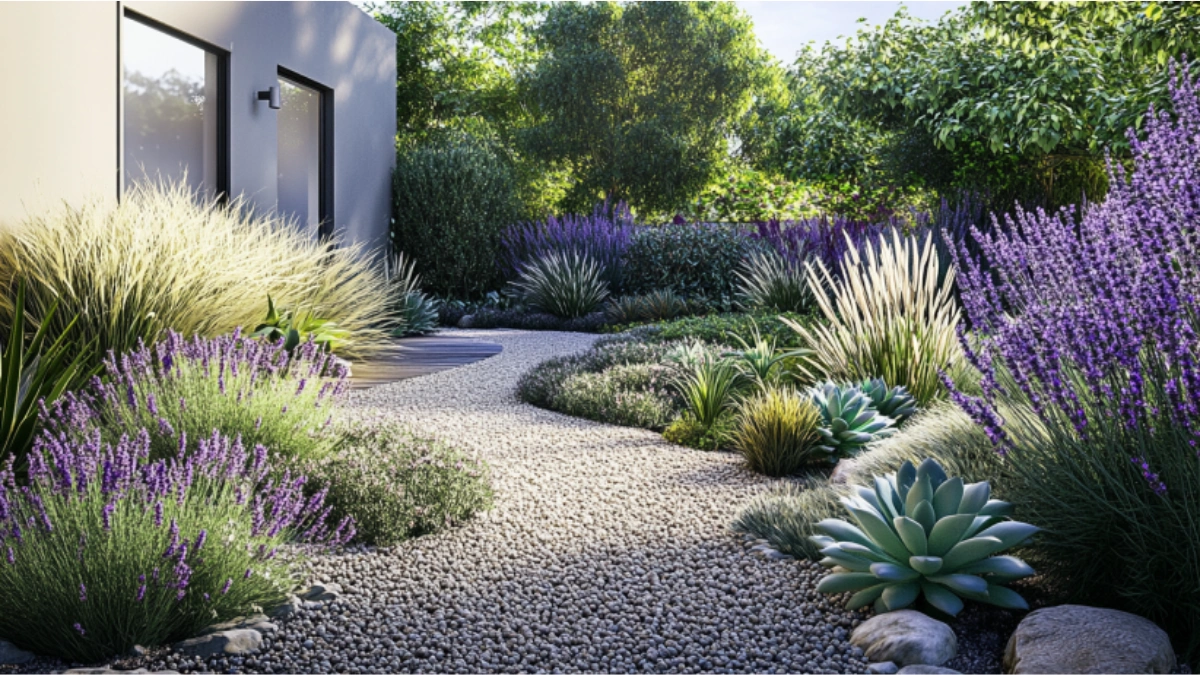How to Create a Stunning Garden Without a Green Thumb: Easy, Low-Maintenance Ideas for Beginner
Table of Contents
Does the idea of creating a beautiful garden make you break into a sweat? You’re not alone. According to a recent survey, over 65% of homeowners say they want a garden, but don’t feel confident in their ability to maintain one. Whether it’s a lack of time, knowledge, or just a not-so-great track record with plants, gardening can feel intimidating—especially if you don’t naturally have a green thumb.
But here’s the good news: creating a stunning garden doesn’t require expert-level skills or endless hours of care. With smart design, low-maintenance plant choices, and a few decorative tricks, you can enjoy a thriving outdoor space that basically takes care of itself.
In this guide, you’ll discover practical, beginner-friendly strategies to build a lush, inviting garden with minimal effort. From choosing the right plants to adding stylish hardscaping and clever container arrangements, each section offers tips, examples, and visual breakdowns to guide you step by step. Let’s transform your outdoor area into a garden oasis—even if you’ve never kept a plant alive for more than a week.
Start with Low-Maintenance Plants That Thrive on Neglect
One of the best ways to build confidence in your gardening journey is to start with plants that are forgiving. Many hardy species can thrive with minimal watering, less-than-perfect soil, and irregular sunlight.
Look for native or drought-tolerant varieties, which are naturally adapted to your region’s climate. Succulents, ornamental grasses, lavender, and perennial herbs like rosemary and thyme are excellent choices for beginners.
Pair these with slow-growing shrubs and evergreens that provide year-round structure without constant pruning.
Easy-Care Plants for Beginner Gardens
| Plant Type | Name Examples | Care Level | Sunlight Needs | Water Requirements |
| Succulents | Echeveria, Aloe Vera | Very Low | Full Sun | Minimal |
| Ornamental Grasses | Blue Fescue, Fountain Grass | Low | Full to Partial | Moderate |
| Perennial Herbs | Lavender, Thyme, Sage | Low | Full Sun | Low |
| Shrubs | Boxwood, Juniper | Moderate | Full to Partial | Low to Moderate |
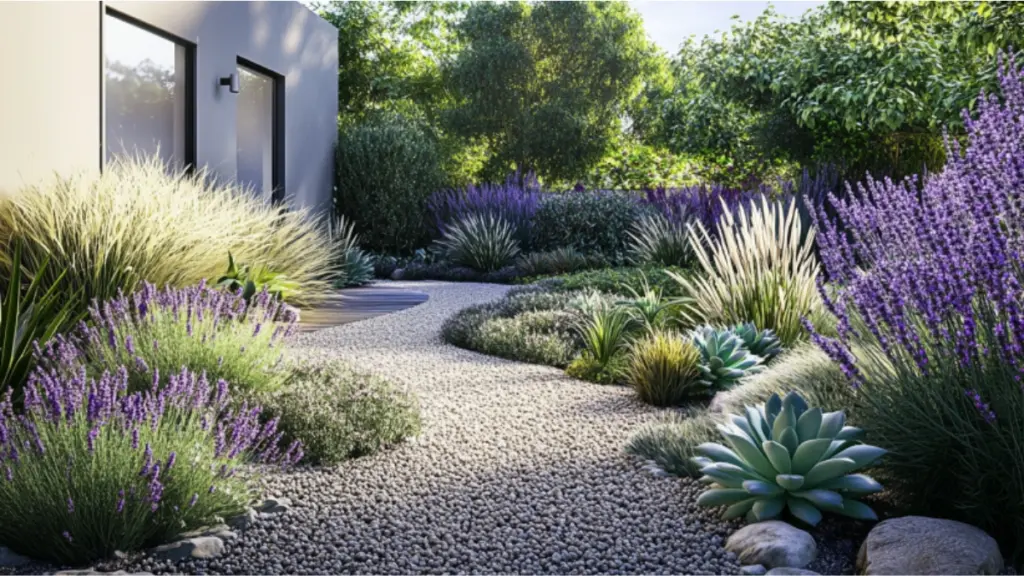
Design a Layout That Works for You, Not Against You
You don’t need a sprawling lawn to enjoy a lush garden. In fact, smaller or container-based gardens can be even more impactful with thoughtful layout design. Start by sketching out zones—seating areas, walkways, and plant clusters—based on how you plan to use the space.
Use symmetry or repetition to create visual flow. A few matching pots, stepping stones, or a central focal point like a bench or birdbath can guide the eye and create a sense of order.
Raised beds, vertical gardens, and corner planters are perfect for tight spaces or renters who can’t dig up the ground.
Step-by-Step Layout Planning Guide
| Step | Task | Tip |
| 1 | Measure Your Space | Use graph paper or a digital app |
| 2 | Choose Key Functions | Seating, dining, visual appeal, storage |
| 3 | Designate Zones | Group plants by sun/shade needs |
| 4 | Add Paths or Borders | Gravel, mulch, or stepping stones work well |
| 5 | Place Decorative Elements | Use symmetry or odd-numbered groupings |
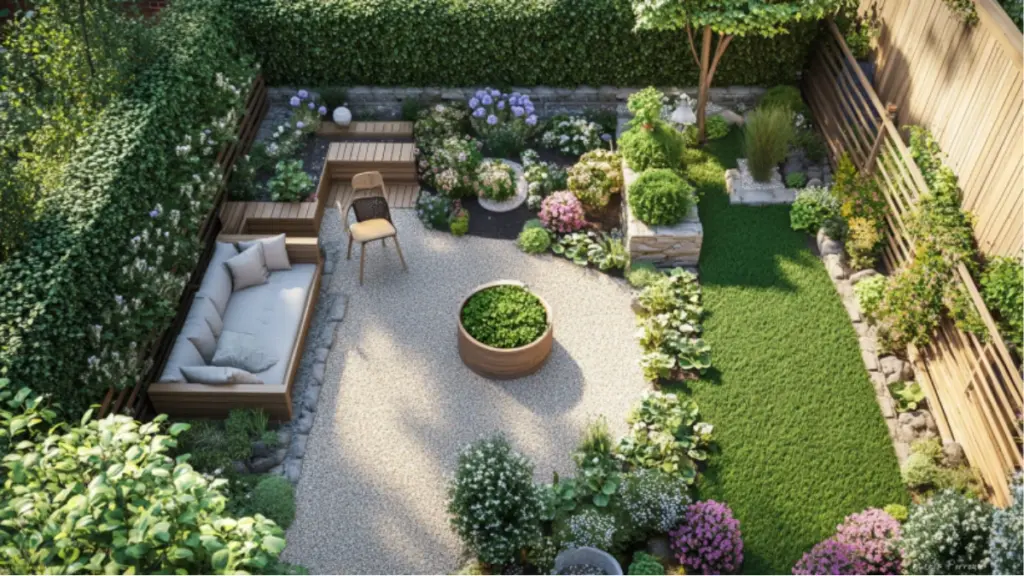
Use Containers to Your Advantage
If you’re not ready to dig into the dirt, container gardening is your best friend. Planters, pots, and hanging baskets give you complete control over soil, placement, and design—plus, they’re moveable, allowing for easy seasonal changes.
Start with a trio of containers in varying sizes for a designer look. Choose materials like terracotta, concrete, or glazed ceramic for a polished aesthetic. Ensure your containers have proper drainage holes, and elevate them slightly with pot feet or bricks to prevent rot.
Soil choice matters just as much as the container. Use high-quality potting mix blended with compost to promote healthy growth. Slow-release fertilizers make ongoing care easier, especially if you’re forgetful about feeding your plants.
Try these combinations for foolproof container success:
Container Recipe Ideas for Beginners
| Container Combo | Filler (Main Plant) | Spiller (Trailing) | Thriller (Height) |
| Classic Mediterranean | Rosemary | Creeping Jenny | Lavender |
| Lush Tropical | Caladium | Sweet Potato Vine | Elephant Ear |
| Modern Minimalist | Snake Plant | String of Pearls | ZZ Plant |
For watering, use a moisture meter or simply test the soil with your finger—if it’s dry 2 inches down, it’s time to water. And when the seasons change, simply rotate your containers or bring them indoors to extend their lifespan.

Decorate with Hardscaping and Garden Accents
Non-living elements can be the secret to a garden that looks curated with minimal effort. Hardscaping—like gravel, pavers, or edging—defines your space, reduces weeds, and adds texture.
Consider a gravel patio, stepping stone path, or a border of reclaimed bricks. These features require no watering, won’t die, and add instant style.
Then layer in accents: lanterns, weather-resistant cushions, ceramic statues, or a water feature. Think of your garden like a room—use decor to bring out personality.
Top Hardscape & Accent Ideas for Low-Maintenance Gardens
| Element Type | Ideas | Maintenance Level |
| Ground Cover | Pea gravel, bark chips, pavers | Very Low |
| Structures | Trellises, pergolas, raised beds | Low |
| Accents | Outdoor lanterns, planters, benches | Very Low |
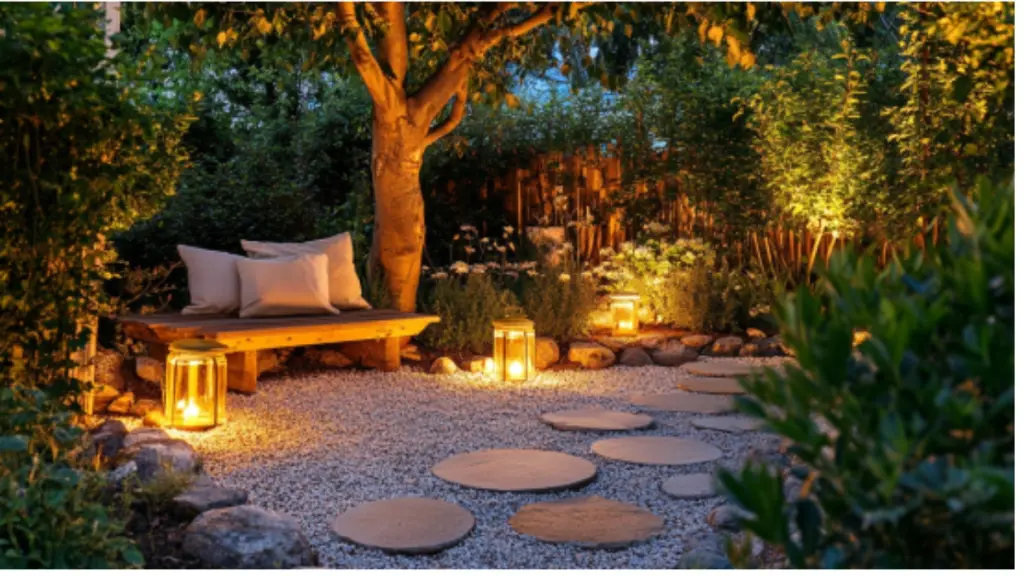
Embrace Artificial and Drought-Friendly Alternatives
If live plants just aren’t your thing, faux options have come a long way. High-quality artificial greenery can add softness and structure, especially in shaded or enclosed areas.
Artificial turf, synthetic boxwood panels, and faux topiaries can provide color year-round with zero maintenance. Combine these with drought-friendly real plants like succulents or agave to create a hybrid garden that looks alive but asks little of you.
Real vs. Faux Garden Options Comparison
| Feature | Real Plants | Artificial Options |
| Water Needs | Moderate to High | None |
| Sunlight Needs | Varies | None |
| Visual Texture | Natural variation | Consistently neat |
| Cost Over Time | Medium (ongoing care) | Low (one-time cost) |
| Maintenance | Pruning, watering, etc. | Dusting only |
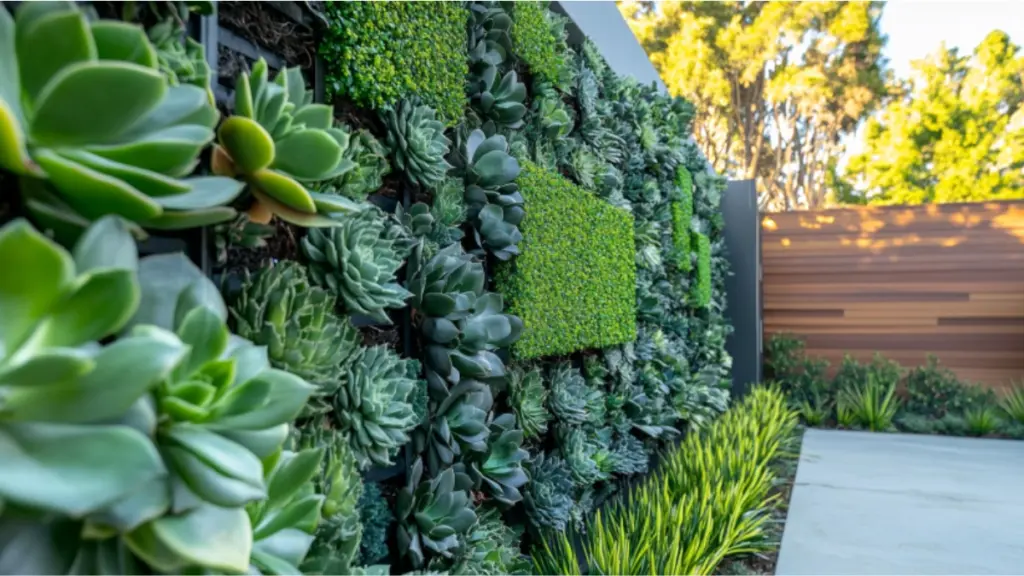
Create a Garden Schedule You Can Actually Stick To
One of the biggest obstacles for beginners is the fear of forgetting. The solution? A simple, seasonal garden care calendar tailored to your plants and lifestyle.
First, list out your plant types and their basic needs. Use a digital app or printable planner to track watering and feeding times. For example, succulents may only need watering twice a month, while herbs appreciate a weekly drink.
Set reminders for larger tasks like mulching, pruning, or rotating containers. Plan these by the season—not the week—to reduce overwhelm.
Seasonal Garden Care Calendar Example
| Season | Key Tasks | Tips for Success |
| Spring | Planting, fertilizing, mulching | Use compost or organic fertilizer |
| Summer | Watering, weeding, trimming | Water early morning or evening |
| Fall | Cleanup, bulb planting, composting | Use fallen leaves as natural mulch |
| Winter | Protect containers, prune shrubs | Store pots indoors to avoid frost damage |
By grouping care into simple, predictable tasks, you’ll be more likely to stay consistent—and your garden will reward you with lasting beauty.

Let Nature Do the Heavy Lifting
Incorporating natural elements like mulch, ground covers, and self-seeding flowers allows you to step back and let the ecosystem do the work. Ground cover plants like creeping thyme or sedum suppress weeds, retain moisture, and require little intervention.
Mulching helps lock in water and reduce erosion. Native flowers like coneflowers or black-eyed Susans self-seed and attract pollinators, keeping your garden lively and low effort.
Nature-Driven Garden Solutions That Reduce Workload
| Element | Function | Examples |
| Mulch | Moisture retention, weed barrier | Bark, straw, compost |
| Ground Cover | Weed control, soft texture | Sedum, Thyme, Ajuga |
| Self-Seeding Plants | Re-bloom yearly with little input | Coneflowers, Poppies, Alyssum |
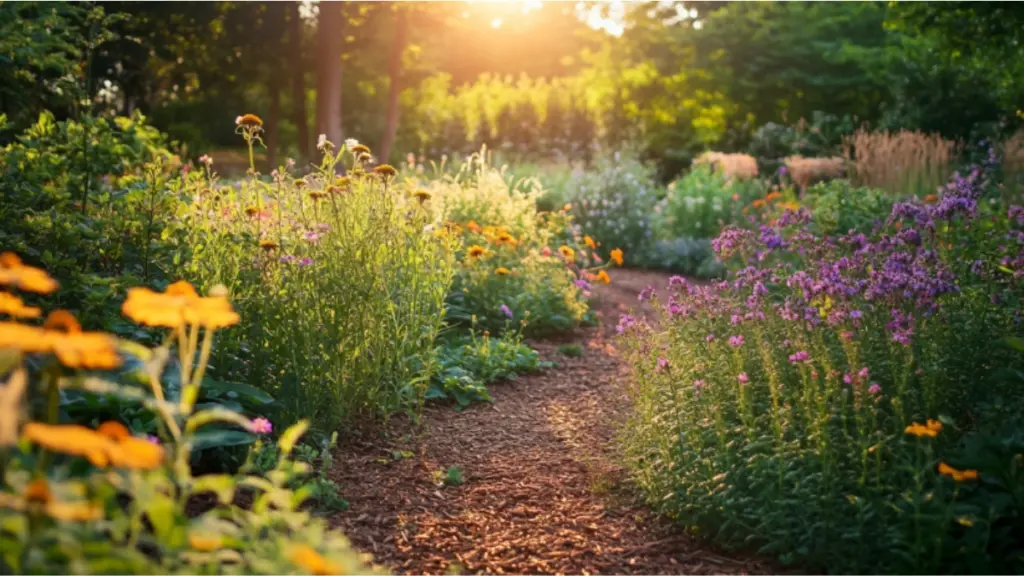
Conclusion
Creating a stunning garden doesn’t require perfection—it just requires intention. By selecting easy-care plants, using decorative yet functional elements, and embracing a simplified care routine, even the most inexperienced gardener can enjoy a flourishing outdoor space.
Remember, it’s not about doing everything—it’s about doing what works for your space, your schedule, and your style. With a few smart choices and a relaxed approach, you’ll be amazed at how effortlessly your garden can come to life.

